Bears constitute an essential component of the natural environment. And therefore, it behooves us to comprehend the reasons behind what attracts bears to particular regions.
This knowledge is particularly crucial for individuals residing in bear-inhabited areas. And those who indulge in recreational activities in the wilderness.
While bears possess an inquisitive nature and usually explore their surroundings, specific factors entice them to particular locations. Understanding the factors that attract bears is crucial in promoting harmonious coexistence with these magnificent creatures. And safeguarding against the disruption of their natural behaviors by human activity.
This article aims to elucidate the various aspects that entice bears. And the measures to address their interactions with humans. Additionally, we will explore strategies for deterring unwanted bear visits and avoiding confrontations with them.
What Attracts Bears?
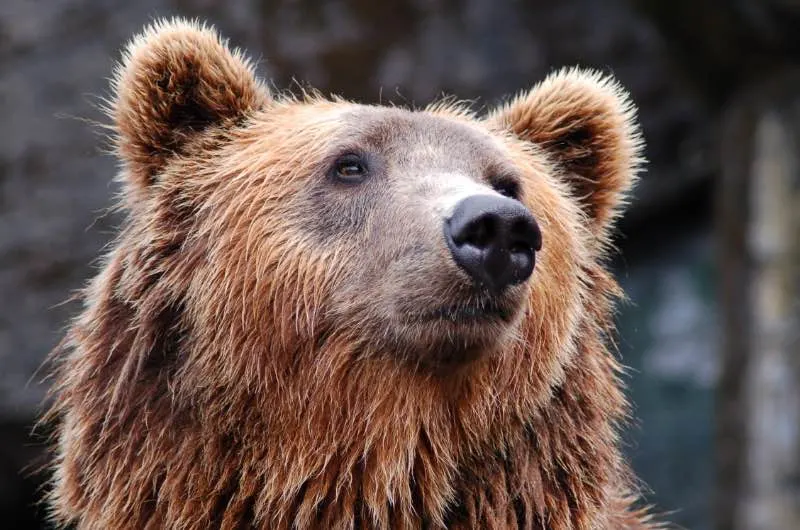
1. Unsecured Food Sources in the Area
One of the most prevalent and compelling reasons for bears to congregate in a particular area is the availability of unsecured food sources. Bears possess an incredible sense of smell and are inevitably drawn to places with easily accessible food sources, such as campsites, garbage cans, and bird feeders.
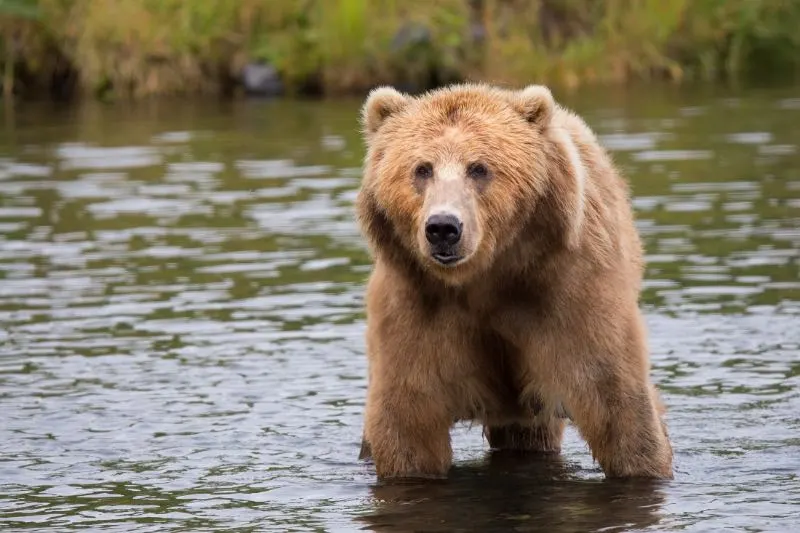
Unfortunately, when bears get used to finding food in these locations, they become conditioned to return to them, leading to a surge in human-bear interactions, which can result in injuries or property damage.
To mitigate the risk of attracting bears to unsecured food sources, it is essential for outdoor enthusiasts, hikers, and homeowners to take proactive measures to deter bears.
First and foremost, they should store food in airtight containers or bear-resistant canisters that are securely placed at least 100 yards away from sleeping areas. Furthermore, all garbage should be disposed of in bear-resistant garbage cans or properly sealed bags.

Bird feeders should be removed during the bear season or hung at least ten feet above the ground and four feet away from any vertical surface, ensuring they are inaccessible to brown bears.
2. Unsecured Trash and Garbage
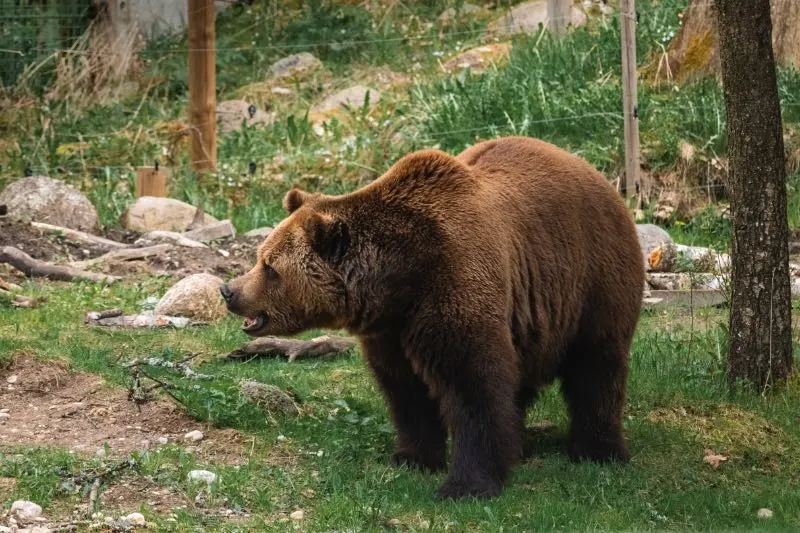
Unsecured trash and garbage are an irresistible temptation for grizzly bears, who are omnivores and will not hesitate to scavenge for food. Unsecured garbage cans, compost heaps, root vegetables, pet food, and birdseed can easily attract these creatures and increase the likelihood of human-bear conflicts. To discourage hungry bears from rummaging through your garbage, it is imperative to properly secure all potential food sources on your property.
To begin with, it is essential to locate garbage cans in a secure location and ensure they have lids that are difficult to open. In areas where bears are known to roam, it may be necessary to invest in bear-resistant garbage cans specifically designed to withstand the strength of a bear.

Additionally, pet food should never be left outdoors, as bears will undoubtedly be attracted to it. Instead, pet food should be kept indoors in airtight containers. Birdseed should also be stored in a secure location, preferably in a metal container that bears cannot access.
It is imperative to recognize that in certain regions, neglecting to secure trash and garbage can lead to legal repercussions, including fines and legal action.
Furthermore, the consequences of bears becoming accustomed to human-made food sources extend beyond mere property damage or human harm. They can ultimately result in the inhumane euthanization of these magnificent creatures. By prioritizing safeguarding trash and other potential food sources, we can guarantee the safety of both humans and bears alike.
See Related: Best Composting Books You Need to Read
3. Pet Foods Left Outdoors
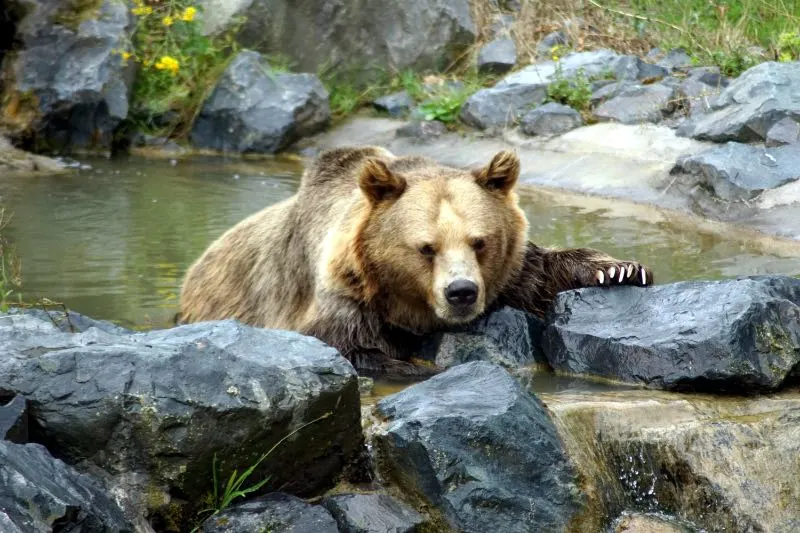
Bears are remarkable creatures endowed with an incredible sense of smell that enables them to detect food smells from a considerable distance. Unfortunately, this trait often puts them at odds with humans, particularly concerning pet food left outdoors.
While pet owners may consider it convenient to leave pet food bowls and bird feeders outside, it could be dangerous for hungry bears, who are naturally attracted to these food sources.
Pet food, regardless of the quantity, has a tantalizing aroma that appeals to bears, thereby putting them in danger. Moreover, the scent of pet food can linger in the air for an extended period, further increasing the likelihood of attracting these majestic beasts.
To safeguard bears and prevent potentially dangerous encounters, it is paramount to ensure that food is never left outside. Additionally, bird feeders should be taken down or emptied when bears are active in the area.
Bears are wild animals that require a varied diet to maintain their health and well-being. Relying on human-provided food sources such as pet food or blood meal can disrupt their natural feeding habits and cause them to lose their fear of humans. It can result in habituated bears, which are dangerous to humans and bears alike.
In a bear country, it is imperative to take proactive measures to mitigate the risks associated with bear human conflicts. Apart from ensuring pet food is never left outside, bear-resistant garbage cans should be utilized, and barbeque grills should be cleaned thoroughly after use. Furthermore, if bears are sighted in the vicinity, it is advisable to refrain from engaging with them and instead alerts local authorities.
See Related: Organic vs Natural Foods: What’s the Difference?
4. Hummingbird feeders, bird seed, or suet
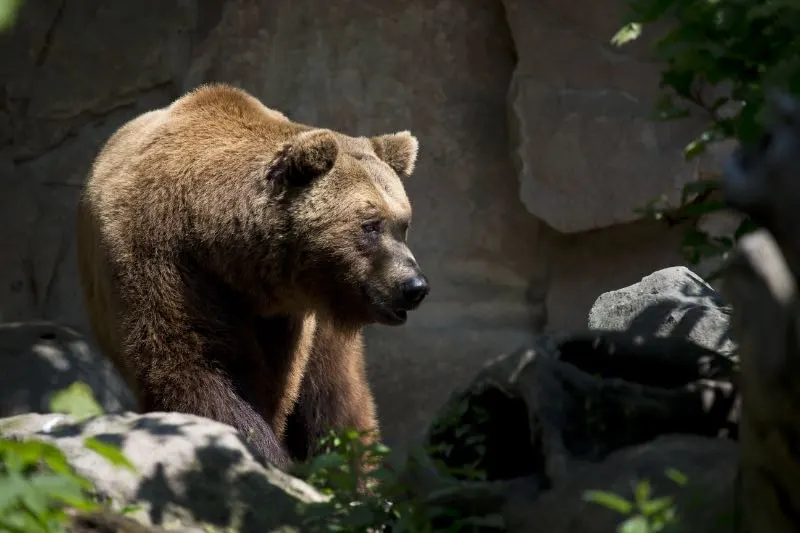
As nature enthusiasts, we relish the sights and sounds of birds frequenting our gardens and feeders. However, these welcoming invitations for our feathered friends could also attract unwanted visitors such as bears. While bears typically rely on berries, honey, and insects for sustenance, they may also be lured by bird feeders, hummingbird feeders, and suet.
Bird seed, a typical bird food, is also a favorite of bears, who can consume vast quantities of it. If birdseed is left unsecured, it could lead to conflicts between humans and bears. Similarly, bears can be enticed by the sweetness of hummingbird nectar and may even attempt to climb up to the feeders or berry bushes. It can result in damage to the feeder or injury to the bear.
To prevent bears from accessing these food sources, it is essential to take proactive measures. Hummingbird and bird feeders should be hung at least 10 feet off the ground, out of reach of a bear’s long arms. Moreover, they should be secured to prevent bears from shaking them down. Similarly, bird seeds should be kept in a secure container inaccessible to bears.
Suet, a high-energy bird food made of animal fat and mixed with nuts, seeds, or fruit, is another potential bear attractant. Suet cakes should never be left outside. And any remnants should be disposed of promptly. It is especially important during the warmer months when suet can melt and become a sticky mess that attracts not only bears but other wildlife as well.
While bears are fascinating creatures to observe, we must ensure that we do not create situations that are hazardous to both humans and bears. Encouraging responsible bird-feeding practices can help minimize the risks of human-bear conflicts. It includes using bear-resistant containers for birdseed, avoiding leaving food items out in the open, and reporting bear sightings to local authorities.
See Related: Hauser Bears
5. Unsecured Fruit Trees
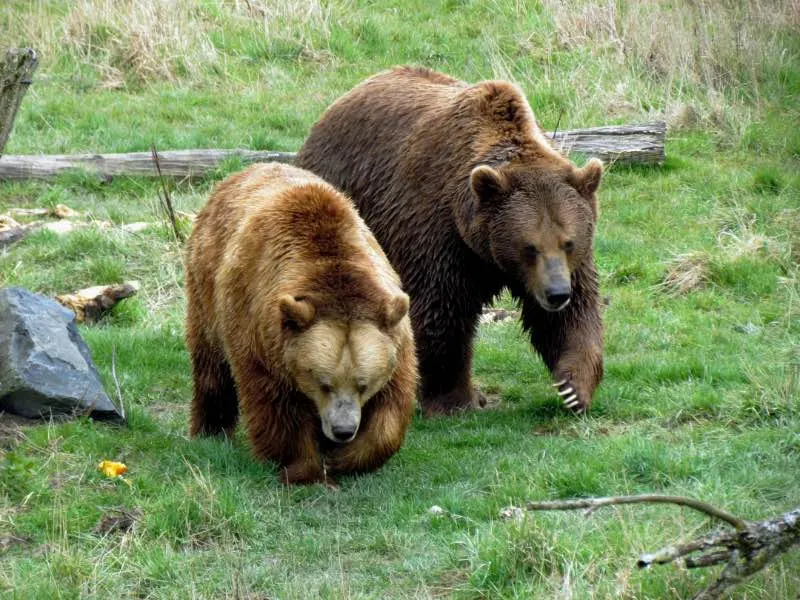
The alluring scent of ripe fruit is not only irresistible to our senses but also to bears, who have a heightened sense of smell. The abundance of fruit trees in residential areas can pose a risk for potential human-bear conflicts if the trees are not properly secured.
To prevent bears from accessing unsecured fruit trees, homeowners should take proactive measures to deter them. One of the most effective methods is to install an electric fence around the tree.
It creates a physical barrier that bears cannot easily penetrate. And it also provides an unpleasant sensation when touched and discourages a hungry bear from attempting to climb or reach the tree.
Regularly pruning the tree and removing fallen fruit is another essential step in minimizing the risk of bear encounters. Fallen fruit can attract bears from a distance, making them more likely to venture into residential areas in search of a tasty snack.
Moreover, overgrown trees with branches that extend near the ground can provide easy access for bears to climb up and feast on the fruit.
See Related: Fun, Interesting Bear Facts to Know
6. Strong smells such as perfumes, soaps, or lotions
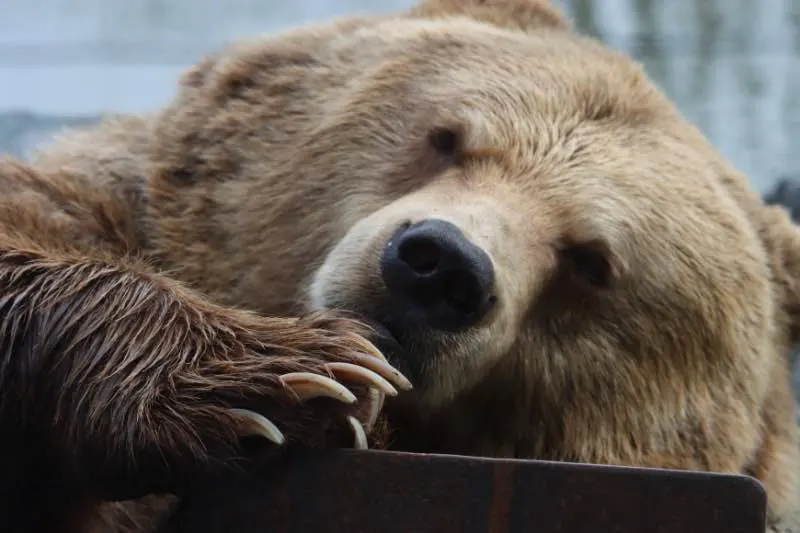
Bears are known for their exceptional sense of smell, which allows them to detect even the faintest of odors. As a result, strong smells like perfumes, soaps, deer repellent, or lotions can easily capture a bear’s attention and curiosity.
It is important to note that bears do not differentiate between pleasant and unpleasant odors. They simply perceive them as potential sources of food or danger. Therefore, it is essential to minimize strong odors in areas where bears may be present to avoid attracting them.
Aside from personal care products, bears are also drawn to food odors. Leftover food, fish fertilizer, or food waste stored outdoors in unsecured containers can attract bears from miles away, creating potential conflicts between humans and wildlife. To prevent this, homeowners should store all food waste in bear-proof containers, which are specifically designed to prevent bears from accessing them.
Furthermore, it is essential to clean up any food debris or spills from outdoor cooking or dining areas immediately. It not only helps to prevent bear encounters but also helps to maintain a clean and hygienic environment.
See Related: Sun Bear: Why Is It Endangered?
7. Barbeque grills
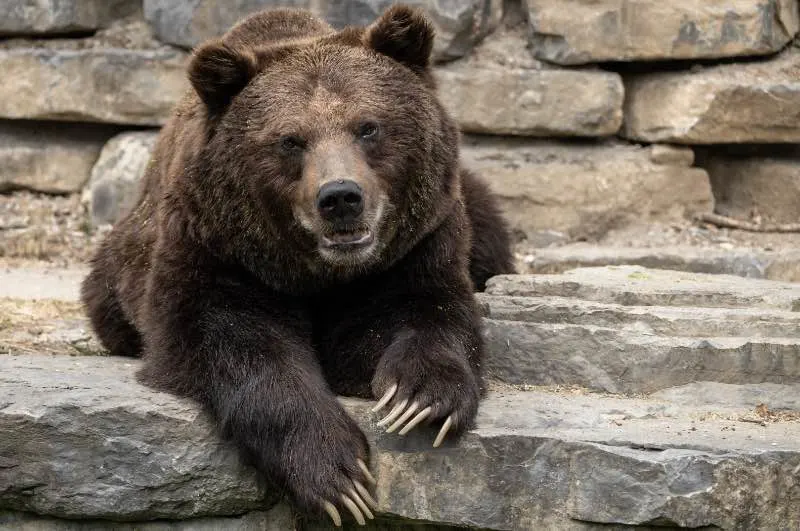
Bears have an exceptional sense of smell, and the aroma of barbeque grills can be irresistible. This scent can travel miles, luring curious bears towards campsites and residential areas in search of food. Once attracted to a grill, bears may become agitated or aggressive, potentially causing harm to humans or themselves.
To avoid attracting bears, it is crucial to keep barbeque grills clean and free of food debris. After each use, grills should be thoroughly cleaned and stored in a secure location away from the campsite or residential area. It helps to minimize any lingering odors that could attract bears to the area.
It is also important to avoid leaving food or scraps in the grill or the surrounding area, as this will further attract bears. Any food waste should be disposed of properly in bear-proof containers, far away from the campsite or residential location.
See Related: Best Compostable Plates: Eco-Friendly Options to Buy
8. Compost piles
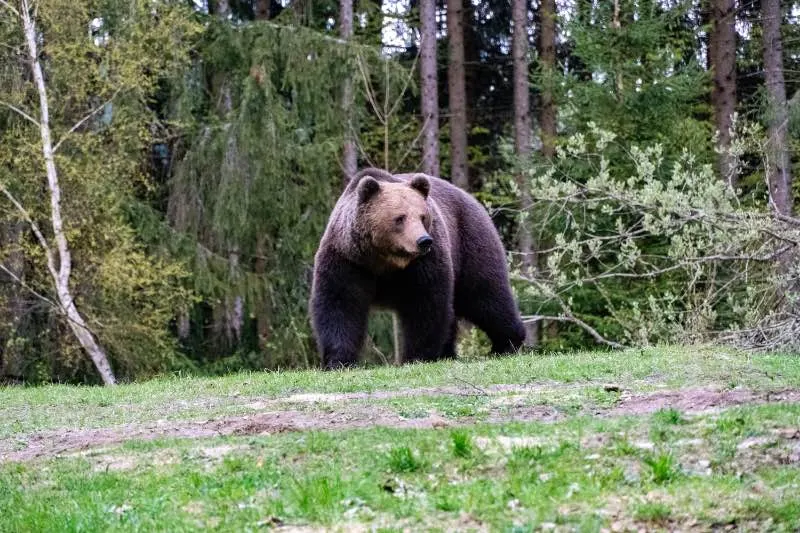
Composting is a highly beneficial practice that promotes waste reduction and soil fertility. However, it can pose a threat to both humans and wildlife, mainly when bears are present. These opportunistic omnivores are attracted to the rich array of food sources available in compost piles.
The diverse assortment of organic materials in compost piles, including fruits, vegetables, and grains, is an irresistible lure for bears. Moreover, the enticing aroma of cooked foods and savory items such as fish, meat, and cheese can draw bears from considerable distances.
To mitigate the risk of attracting bears, it is imperative to implement proper precautions when composting. The compost pile should be situated at a safe distance from your residence and kept in a secure container or enclosure inaccessible to wildlife. It can be achieved through bear-resistant compost bins, sturdy fencing, or electrified barriers.
In addition to location and containment, it is crucial to abstain from adding meat or animal products to the compost pile. These materials can emit a strong odor that is too tempting for bears and other wildlife to ignore.
Rather, it is recommended to focus on using plant-based materials and avoiding strong-smelling foods that can attract bears. By taking these measures, individuals can compost safely while safeguarding themselves and wildlife.
9. Unsecured Livestock or Bee Hives
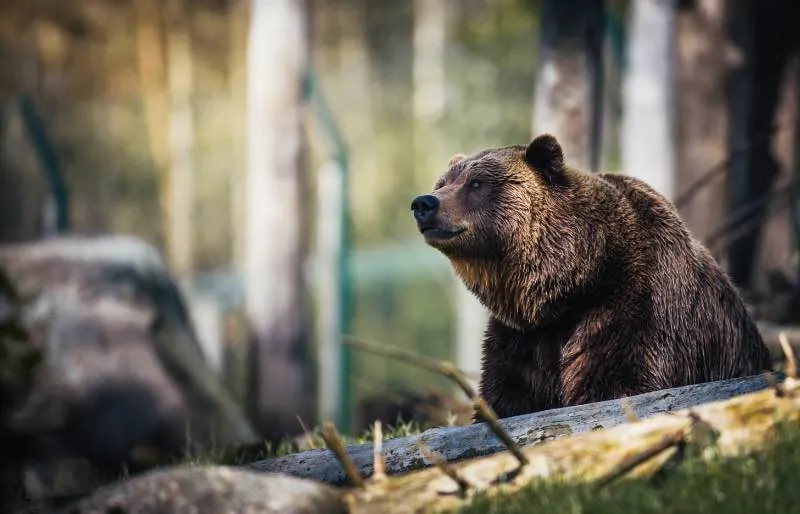
Bears are known for their insatiable appetite and formidable strength, making unsecured livestock or bee hives a tempting and potentially hazardous target for these formidable creatures. The scent of livestock or the sweet aroma of honey can be irresistible to bears, attracting them to investigate and potentially feed.
To mitigate the risk of attracting bears to your livestock or bee hives, it is essential to implement appropriate measures. Livestock should be kept in secure enclosures, such as sturdy barns or stables, with robust fencing that can withstand a bear’s strength. Bee hives should also be kept in durable, bear-resistant boxes and located in areas challenging for bears to access.
In the event that a bear is spotted in the vicinity of your livestock or bee hives, it is crucial to contact local wildlife authorities immediately for guidance on preventing bears from accessing the area. It may involve the use of electric fencing or other bear-resistant measures to safeguard the welfare of both the animals and the bears.
It is also important to note that bears are protected under state and federal laws, and it is illegal to harm or kill a bear without proper authorization. As such, it is vital to prioritize non-lethal conflict resolution strategies and always seek the advice of wildlife professionals when dealing with bears.
By implementing appropriate measures and seeking guidance from wildlife professionals, we can prevent conflicts with bears and ensure the safety of humans and wildlife.
See Related: Bear Trust International
10. Other Animals, such as Deer, that attract Bears
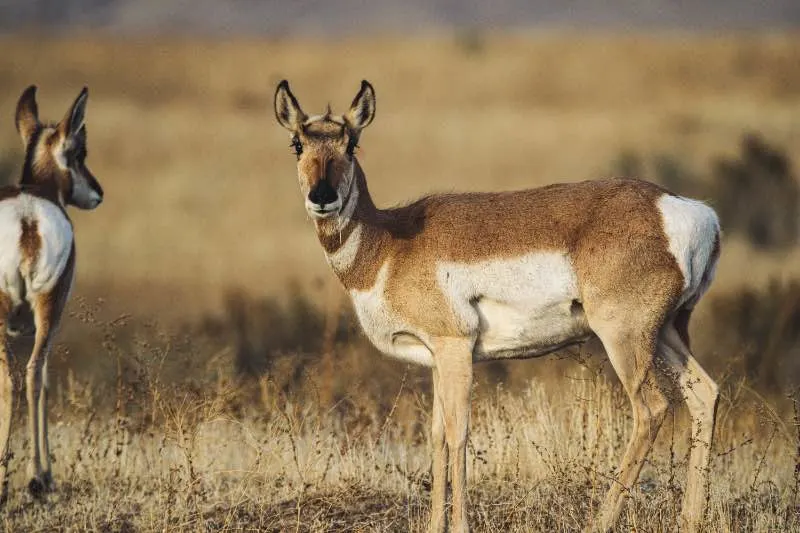
Bears, with their awe-inspiring physical prowess and voracious appetite, have long fascinated humans. Though they have a diverse diet, bears are particularly attracted to areas with high deer populations. Using their powerful sense of smell and keen tracking abilities, bears can quickly locate and prey on these animals.
Beyond Deer, bears are also drawn to other easy prey, including small mammals, birds, and fish. Insect and fish concentrations, such as those seen during salmon spawning, can also be attractive food sources for bears.
To minimize the risk of bear encounters, it is crucial to manage food attractants properly and take precautionary measures. Storing food, garbage, and other items that can attract bears in a safe and secure manner can help to deter these animals from approaching human settlements.
Additionally, avoiding hiking or camping during periods when bears are most active and being aware of signs of bear activity can help to prevent unwanted interactions with these magnificent creatures.
In conclusion, being knowledgeable about what attracts bears to certain areas is essential for minimizing the risk of bear encounters. By taking the necessary steps to avoid attracting bears, people can safely enjoy the great outdoors while also preserving these majestic animals for generations to come.
See Related: Spectacled Bear: Is This Animal Endangered?
Everything You Need To Know About Bears
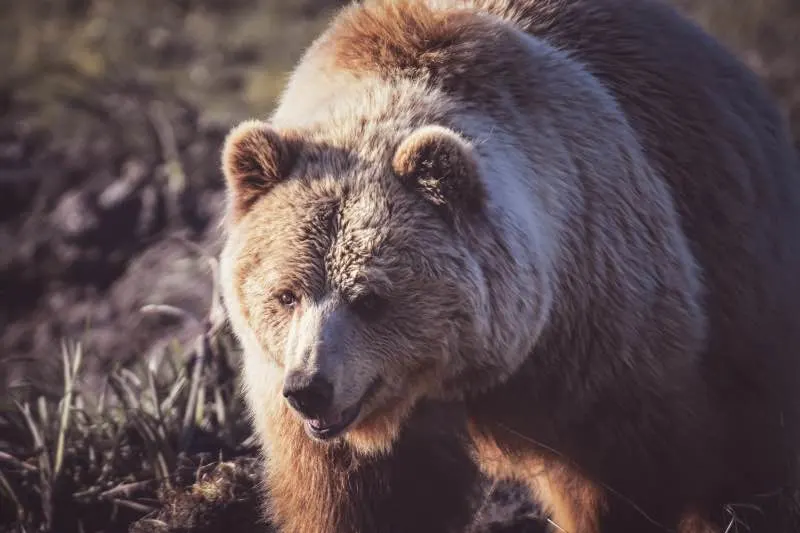
What Do Bears Eat?
Bears, fascinating creatures, possess the remarkable ability to adapt to various habitats and food sources. As omnivores, their diet is highly flexible and dependent on the species of bear and the environment in which they live.
Bears have a highly developed sense of smell, which enables them to detect food from long distances. This keen sense is crucial to their survival, as it allows them to find a wide variety of food sources in their surroundings. Some bears, such as the brown and black bears, are known for their scavenging habits and will feed on carrion or dead animals.
In preparation for winter hibernation, bears undergo a period of intense feeding called hyperphagia. During this time, bears consume large quantities of food to build up their fat reserves. High-fat foods such as nuts, seeds, and berries are preferred during this period, as they provide the necessary energy and nutrition for hibernation.
What Do Black Bears Eat?
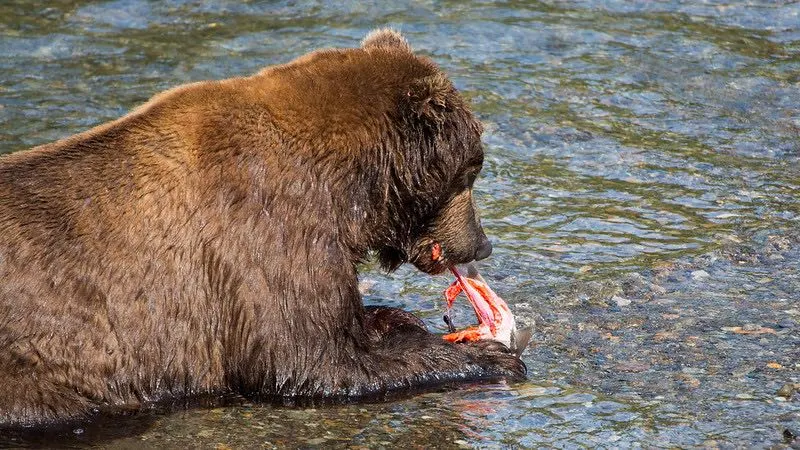
Black bears, akin to various other bear species, exhibit opportunistic feeding behavior, wherein they exploit any available food sources. Although predominantly herbivorous, plant-based food constitutes a significant proportion of their diet. During the spring and summer months, black bears display a diverse palate, ingesting an assortment of plant types, including berries, nuts, fruits, roots, grasses, sedges, and other vegetation.
Despite their herbivorous inclination, black bears do not adhere to a strictly vegetarian diet and occasionally consume animal-based foods. Their omnivorous diet may include insects, fish, rodents, rabbits, bird eggs, beehive contents, carrion, or dead animals.
Black bears are skillful foragers with an acute sense of smell that enables them to detect food sources from afar. Their dietary adaptability to varying environments underscores their unparalleled success and widespread distribution across North America.
See Related: Reasons Why Animals Should Not Be Kept in Zoos
What is the Difference Between Polar Bears, Grizzly Bears, and a Black Bear?
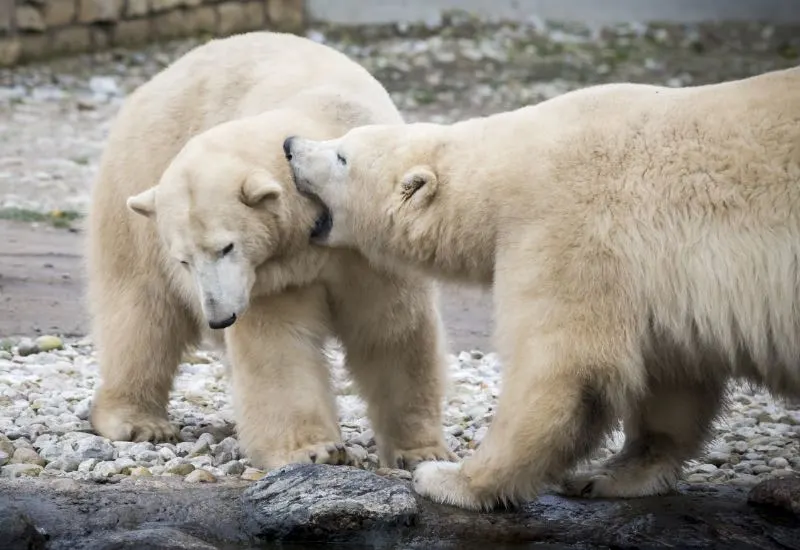
Polar bears, grizzly bears, and black bears are recognized as distinct species, each with distinct features that distinguish them from one another.
Polar bears, the largest of the three species, inhabit the frigid Arctic regions of North America, Russia, and Norway. With their white fur, which serves as an effective camouflage against the snowy surroundings, these mighty beasts are exceptional swimmers. Their diet primarily comprises seals, fish, and other marine mammals, making them predatory creatures.
Grizzly bears, also known as brown bears, inhabit regions across North America, Europe, and Asia. These awe-inspiring creatures are equipped with brown fur, a unique hump on their shoulders, and long claws, facilitating their digging for food. Unlike their polar counterparts, grizzly bears have an omnivorous diet encompassing plant-based foods such as berries, roots, insects, fish, and small mammals.
Lastly, black bears, the smallest of the three species, have fur coats ranging from black to brown and blonde. These delightful creatures are found throughout North America, from Canada to Mexico, and primarily thrive on herbivorous diets of plants, berries, nuts, and fruits.
Although largely herbivorous, black bears are opportunistic feeders known to consume animal-based foods such as insects, fish, and small mammals, akin to other grizzly bear species.
See Related: What is a Critical Habitat? Everything You Need to Know
Do Black Bears Hurt Humans?
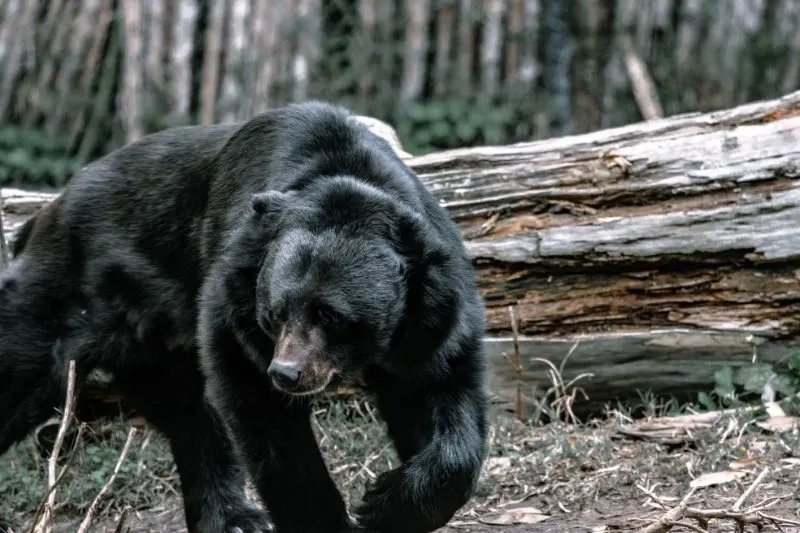
Although black bears are not typically aggressive towards humans, they possess the potential to inflict harm and may attack if they perceive a threat or if their cubs are endangered.
In most cases, black bear attacks on humans occur as a result of individuals unknowingly crossing paths with a mother bear and her offspring or when a bear is startled at proximity. In rare instances, black bears may also attack humans when attracted to human food or garbage.
What Do You Do If You Encounter A Black Bear?
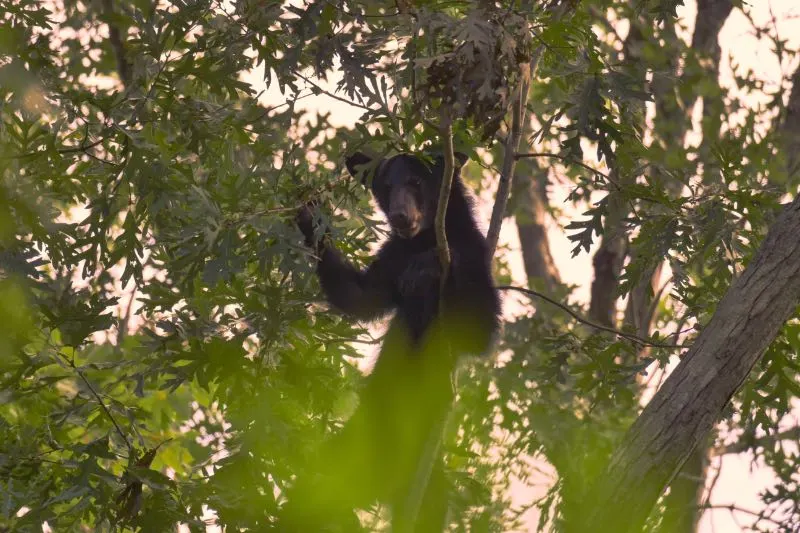
It’s imperative to bear in mind that these are wild animals and should be approached with caution and respect. If one encounters a black bear, it’s advisable to remain composed, make oneself appear as large as possible, and retreat gradually without turning one’s back to the bear.
In the event of a black bear attack, it is crucial to resist the bear aggressively utilizing any available tools or objects, as playing dead is an inadequate defense against such an assault. Ultimately, by adopting suitable precautions, humans can avoid confrontations with black bears and minimize the likelihood of injury.
How do Bears Communicate?
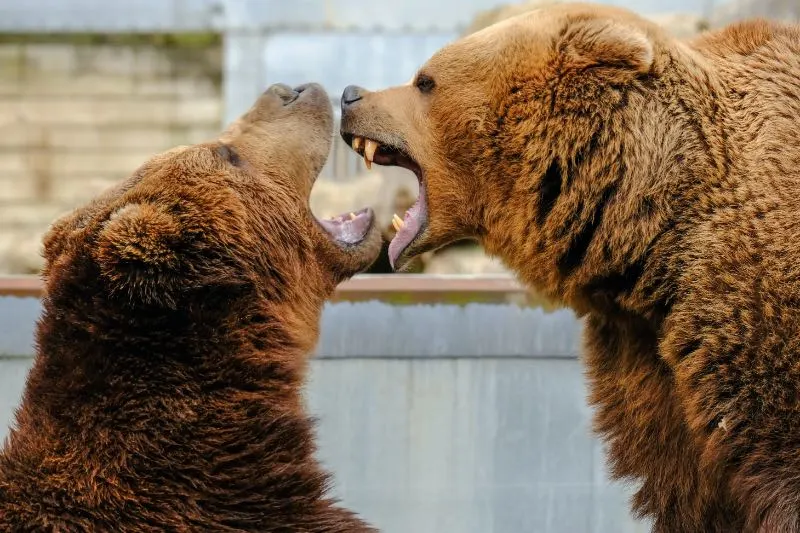
Bears utilize a diverse range of communication methods to convey information among themselves, including vocalizations, body language, and chemical signals.
Vocalizations such as growls, grunts, and moans serve as essential tools for bears to express various emotions such as aggression, fear, or distress. Moreover, cubs emit high-pitched sounds to summon their mother. Such vocalizations form an integral part of their social interaction and convey important messages.
Body language, too, plays a crucial role in bear communication. Bears utilize different postures and movements to convey their intent, status, and mood. For instance, a bear standing on its hind legs can signify a warning or an impending attack, while a submissive bear will lower its head, flatten its ears, and avoid eye contact to display its submission.
In addition to vocalizations and body language, chemical signals also form a crucial aspect of bear communication. Bears possess an exceptional sense of smell and use pheromones and scent markings to communicate a range of messages, such as their presence, social status, and reproductive state, to other bears in their territory. These signals allow bears to establish their position in the social hierarchy, claim their territory, and mate.
Are Bears Intelligent Animals?
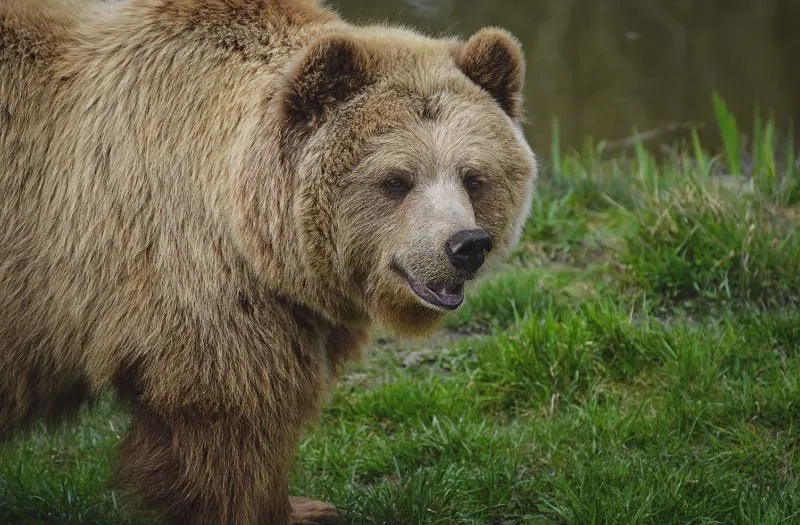
Bears are widely acknowledged for their superior intelligence. Possessing a relatively large brain in comparison to their body size, these majestic creatures exhibit exceptional problem-solving abilities. Their intelligence allows them to find sustenance, navigate their environment, and interact with other animals in the wild.
Remarkably, bears boast an outstanding memory and can recall the location of food sources they have stumbled upon in the past. This remarkable skill empowers them to revisit the same spot when they need to satisfy their hunger. In addition, they possess a remarkable ability to adapt to ever-changing environments and acquire novel behavior patterns.
Furthermore, in captivity, bears have been trained to perform diverse tasks ranging from circus tricks to movie stunts and even scientific experiments. Nevertheless, it is crucial to bear in mind that keeping these fascinating creatures in captivity can impact their physical and mental well-being. It is imperative to note that they are best left undisturbed in their natural habitats whenever feasible.
Are Bears Shy Animals?
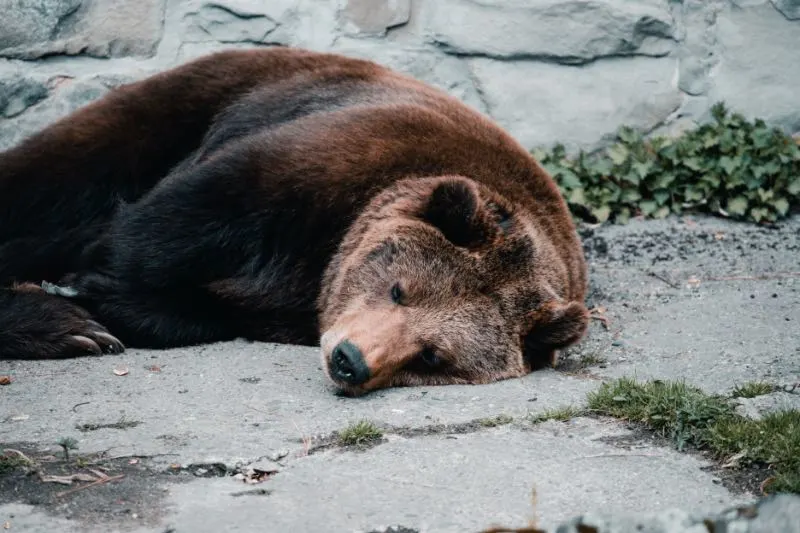
Although bears are not commonly classified as shy animals, they are known to display timid behavior in certain circumstances. Their conduct towards humans and other creatures is greatly influenced by their personalities, life experiences, and the context of their encounters.
As naturally curious creatures, bears may approach humans or other animals to satisfy their curiosity or explore their environment. However, they also exhibit caution and can withdraw if they sense any perceived danger.
In the wild, when encountering unfamiliar humans or animals, bears may exhibit shy behavior by avoiding contact and keeping a safe distance to assess the situation before proceeding. This behavior is particularly noticeable in areas where they are frequently hunted or have previously had negative encounters with humans.
It is essential to note that despite the occasional display of shyness, bears remain formidable animals that require respect and caution when encountered. Therefore, when interacting with bears in the wild, it is recommended to maintain a safe distance, steer clear of any actions that may be considered threatening, and approach them with the utmost care and consideration.
Why are Bears Attracted to the Scent of the Opposite Sex?
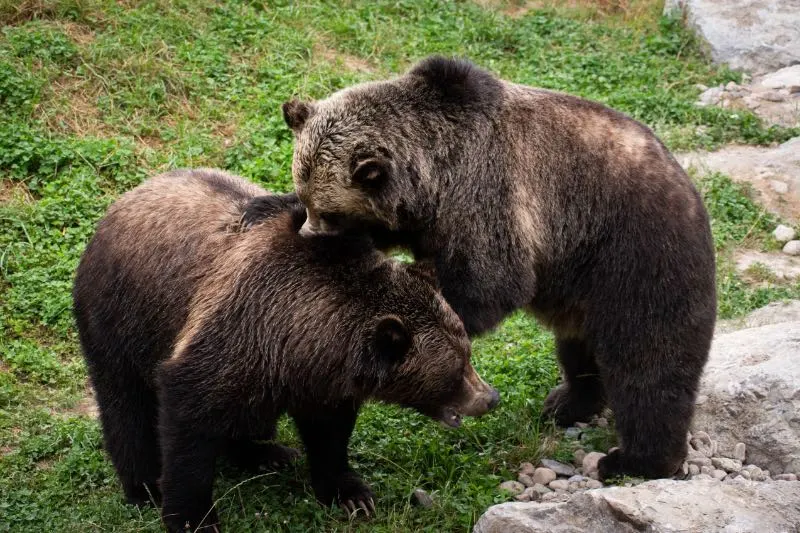
Bears, much like other members of the animal kingdom, are drawn to the scent of the opposite sex by a compelling biological urge to reproduce and procreate. In the wilderness, bears place a great deal of trust in their sense of smell to locate potential mates and to detect the presence of other bears within their territorial boundaries.
During the breeding season, male bears are instinctively enticed by the scent of female bears in estrus, signifying they are ready to mate. Likewise, female bears rely on the scent of male bears to identify suitable mates for reproduction.
As these creatures possess relatively weak eyesight in comparison to other animals, their sense of smell is of utmost importance in their daily lives. As a result, they depend heavily on it to locate food, navigate their surroundings, and communicate with their bear counterparts.
It is essential to bear in mind that while bears may be allured by the scent of the opposite sex, their intentions are not always geared toward reproduction. They may also be attracted to these scents for other reasons, such as marking their territory or identifying potential rivals. Thus, when in the presence of bears in their natural habitat, it is critical to pay close attention to their actions and refrain from engaging in any actions that may provoke aggression.
Related Resources:
- Different Types of Bears From Around the World
- Grizzly Bear vs Black Bear: What’s the Difference?
- Most Endangered Species in Canada


